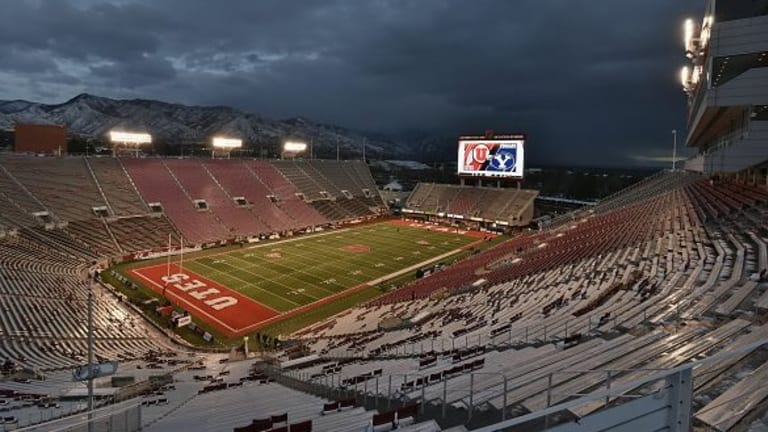
Why a bubble in Salt Lake City makes A LOT of sense...

How badly does the Pac-12 want to play football?
Throughout the country and in the wonderful world of college football, games have been dropping like flies over the past couple of weeks due to the ongoing spread of COVID-19.
With the Pac-12 recently agreeing to play college football this fall with a start date set for Oct. 31, what is there to reason that the conference itself won't face similar setbacks?
The way the schedule works out right now, if the Pac-12 is to play without a hitch, it means that each conference team will play a minimum of seven regular season games with a conference title game coming on Dec. 18.
But if we've learned anything over the past couple of weeks of college football, it's that hitches and cancellations have become the new norm.
So what can be done to make sure the Pac-12 can get all of its games in a safe and healthy manner for all those involved? The word "bubble" has been thrown around but never taken seriously — and maybe it's about time it is.
A Pac-12 college football bubble in Salt Lake City would be ideal for the entire conference if their main goal is to do WHATEVER it takes to play college football in a safe manner.
The four programs from California have been given special exemption to practice and play football — but what happens if COVID-19 cases rise drastically around them? What happens if/when the fall/winter hits and a second wave of cases comes even harder than the original time in the spring?
California as a state is still a hotbed of COVID-19 cases, and where the four schools (Stanford, Cal, USC and UCLA) all play are in two of the most most populated and "hot" areas.
Meanwhile, Oregon, Washington and Colorado (and technically California) have all dealt with brutal fires throughout the summer that has left the air quality decent at best. With the potential for more fires, especially considering the expected warmer-than-usual weather upcoming, fires and air quality are still an issue.
Those are a few reasons why a bubble might make sense — and now for why Salt Lake City is a prime choice.
The most obvious being that it's literally in the middle of the conference. It has the Washington programs to the north, the California schools to its west, the Arizona programs down south and Colorado to the east.
The longest flight is Seattle to Salt Lake City, which is just over two hours of travel. It's a perfect location in case of emergency or the destruction of college football as a whole and programs are forced to return home.
Also, Salt Lake City is a big enough place to house all teams and provide them with ample practice stadiums. There are at least 20 high schools within a 30-mile radius of the city, all of whom would be able to provide their fields for practice. The accommodation situation isn't a problem either, as there are countless hotels in downtown and scattered throughout that could house the 11 other teams and their personnel.
Salt Lake City also has two potential places to house games as well — and potentially fans one day down the road if it permits.
Rice Eccles Stadium is home to the Utes and could house all of the Pac-12 south division games — and Rio Tinto Stadium, home of MLS' Real Salt Lake, could hold all of the Pac-12 north division games. This would create even more of a divide within the conference and keep everybody safer as well.
Although Utah has seen a recent surge in cases, a lot of that has to do with the return of college students to Utah, Utah State and BYU. Without those inflated numbers, the state as a whole has seen its numbers steadily decline, as well as the positive rate of those tested.
When you combine the Quidel testing machines that spit out results in 15 minutes, as well as everything mentioned above, playing in a bubble in Salt Lake City would make a lot of sense and be the best way the conference plays games each and every week.
Now to be ABSOLUTELY clear, I don't see this happening in any way, shape or form. In order to do this, the Pac-12 would essentially have to forego its amateurism for the athletes — something that Stanford and others are strongly against.
Also, by doing this, the leaders of the conference are putting such an emphasis on football that it would have to treat the athletes and coaches as "essential workers" and give them what's necessary. That's a lot for a conference to do that was so hellbent on not playing at all this fall.
Want to share opinions or ask questions? We want to hear them! Making a profile is free and it only takes ~1 minute to set up. Also, be sure to like us on social media for future coverage:
Twitter — @UtahUtes_SI and Ryan Kostecka at @Ryan_Kostecka


